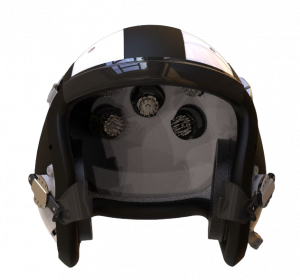
QUASAR Awarded $4.6M to Break the Most Challenging Barriers to Wearable Brain Monitoring
San Diego-based Neurotech is Revolutionizing Non-Invasive Brain-Computer Interfaces Again!
SAN DIEGO, CA, USA, December 7, 2023 /EINPresswire.com/ -- Quantum Applied Science & Research (QUASAR), Inc., the San Diego-based pioneer in wearable neurotech, has been awarded a total of $4.6M to advance its non-invasive brain activity sensing technology (electroencephalography, or EEG). Three new Small Business Innovation Research (SBIR) grants from the National Institute of Health (NIH) and the Department of Defense (DoD) will fund QUASAR to tackle three of EEG’s greatest challenges: 1) improving access to the most vulnerable population: Neonates; 2) recording in extreme environments: Aerospace; and 3) closing a disparity in access for Black people.EEG, a cost-effective and non-invasive brain imaging method, reveals crucial insights into brain states and health. It is commonly used for diagnosing medical conditions such as epilepsy or for administering neurofeedback therapy for mental health disorders. QUASAR has already revolutionized EEG practice with its high-fidelity dry electrodes EEG sensors, which eliminated the need for skin abrasion and the use of messy conductive gels. This innovation is driving increased adoption of EEG in medical and non-medical applications, from cognitive research to brain-computer interfaces and beyond.
1) Revolutionizing Neonatal Monitoring:
Neonatal seizures affect over 14,000 newborns annually in the US, leading to long-term adverse consequences including intellectual and neurodevelopmental disabilities. EEG is the only reliable means of detecting seizures. However, the delicate neonatal skin requires highly trained technicians to apply EEG electrodes, whose abrasive gels irritate the skin and even cause infection, creating a barrier to monitoring. The National Institute of Mental Health (NIMH) awarded QUASAR a $3M Phase IIb grant to adapt its high-fidelity dry electrodes into a Neonatal EEG Monitor (or NEMO) for safe and efficient neonatal EEG acquisition. NEMO aims to increase neonatal monitoring availability, which will ultimately result in better patient management, shorter hospital stays, and improved health outcomes.
2) Safer Military Flights
Between 2013 and 2020, 224 lives, and 186 planes were lost due to military aviation mishaps amounting to losses of $11.6B. The risk of accidents is associated with human physiological and cognitive factors, however, while military planes have hundreds of sensors, pilots’ vitals and cognitive states are not monitored. The Defense Health Agency (DHA) has awarded QUASAR $1.1M to address this gap and develop a Dry Electrode Flight helmet Integrated EEG System (DEFIES). DEFIES will equip aerospace medical researchers with insights into neurophysiological factors affecting cognitive impairments, paving the way for closed-loop mitigations. This project holds the potential to significantly reduce military flight accidents attributed to loss of consciousness, hypoxia, and cognitive fatigue.
3) Bridging Gaps in EEG Access:
Black Americans face a disparity in access to EEG due to the challenge of placing EEG electrodes between thick curly hair and braided hairstyles. To address this disparity, the National Institute of Neurological Disorders and Stroke (NINDS) awarded a $500K Phase I SBIR grant to QUASAR and consultants from USCD Health and Brown University. This project will advance QUASAR’s dry electrode technology to improve EEG accessibility for Black people, ensuring better representation in clinical trials and improving EEG quality in medical practice. QUASAR's commitment to innovation is set to reshape the landscape of non-invasive brain monitoring, making it more accessible and effective for everyone. Stay tuned as QUASAR leads the charge in advancing the future of neurotech.
About QUASAR
QUASAR, Inc. (www.quasarusa.com) is a San Diego-based research and development small company founded in 1998. The company pioneered high-fidelity wearable electroencephalography (EEG) and electrocardiography (ECG). QUASAR’s focus is the creation of high-performance systems for cognitive and physiological monitoring. QUASAR also develops artificial intelligence (AI) algorithms to interpret these signals for real-world applications such as optimizing educational programs and enhancing athletic performance. QUASAR commercializes its technology through its spin-off Wearable Sensing (www.wearablesensing.com)
Research reported in this publication is supported by the National Institute of Neurological Disorders and Stroke (NINDS) of the National Institutes of Health (NIH) under Award Number R43NS132644 and the National Institute of Mental Health (NIMH) of the NIH under Award Number R44MH135741. The content is solely the responsibility of the authors and does not necessarily represent the official views of the NIH. This work is also supported by the U.S. Army Medical Research Acquisition Activity (USAMRAA) under Contract No. HT9425-23-C-0048. Any opinions, findings, conclusions, or recommendations expressed in this material are those of the author(s) and do not necessarily reflect the views of USAMRAA.
Gayle Guy
QUASAR, Inc.
+1 858-412-1839
info@quasarusa.com
Visit us on social media:
LinkedIn
YouTube
QUASAR's Wearable Sensing Brain-Computer Interface Technology
Distribution channels: Aviation & Aerospace Industry, Electronics Industry, Healthcare & Pharmaceuticals Industry, Military Industry, Science
Legal Disclaimer:
EIN Presswire provides this news content "as is" without warranty of any kind. We do not accept any responsibility or liability for the accuracy, content, images, videos, licenses, completeness, legality, or reliability of the information contained in this article. If you have any complaints or copyright issues related to this article, kindly contact the author above.
Submit your press release


